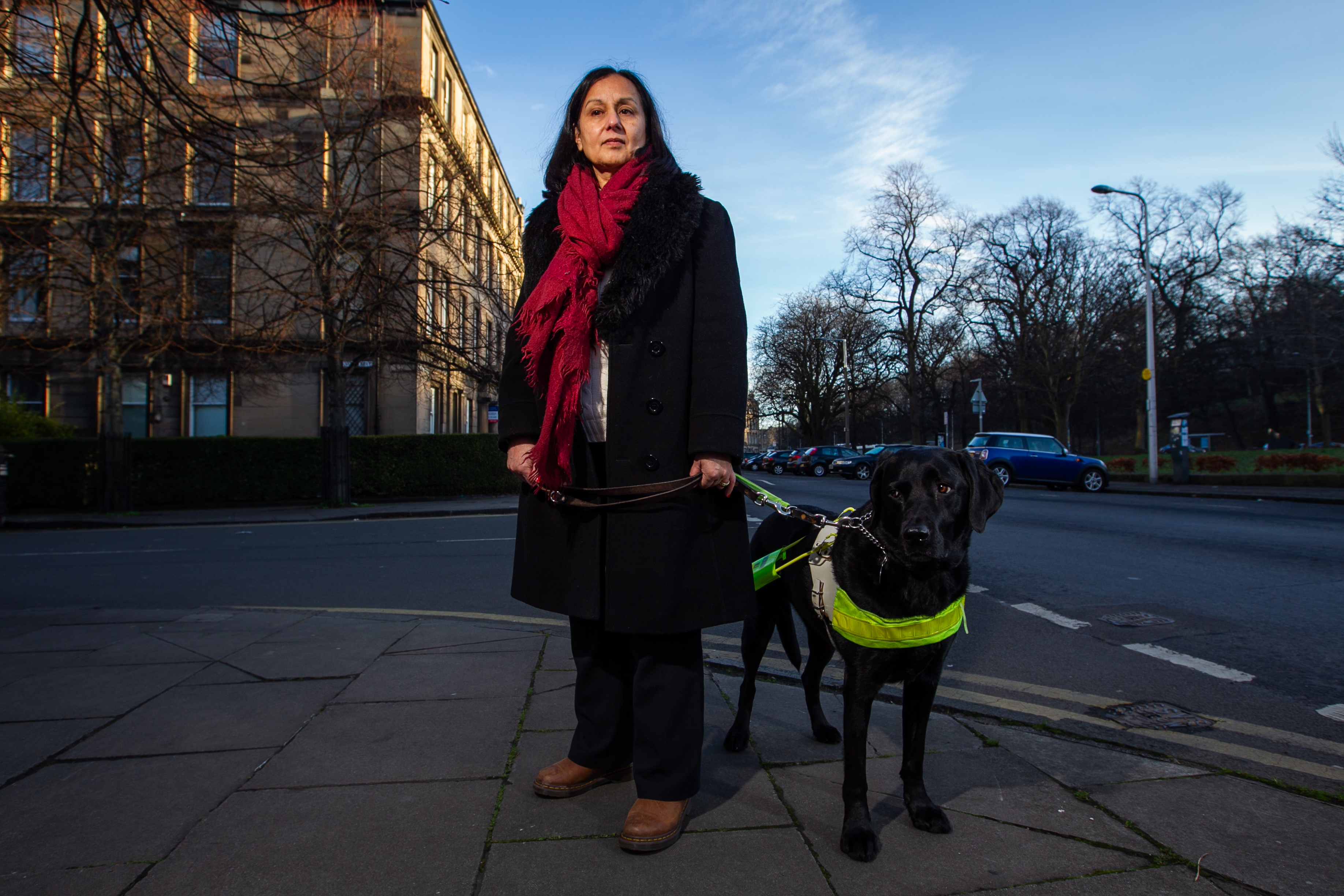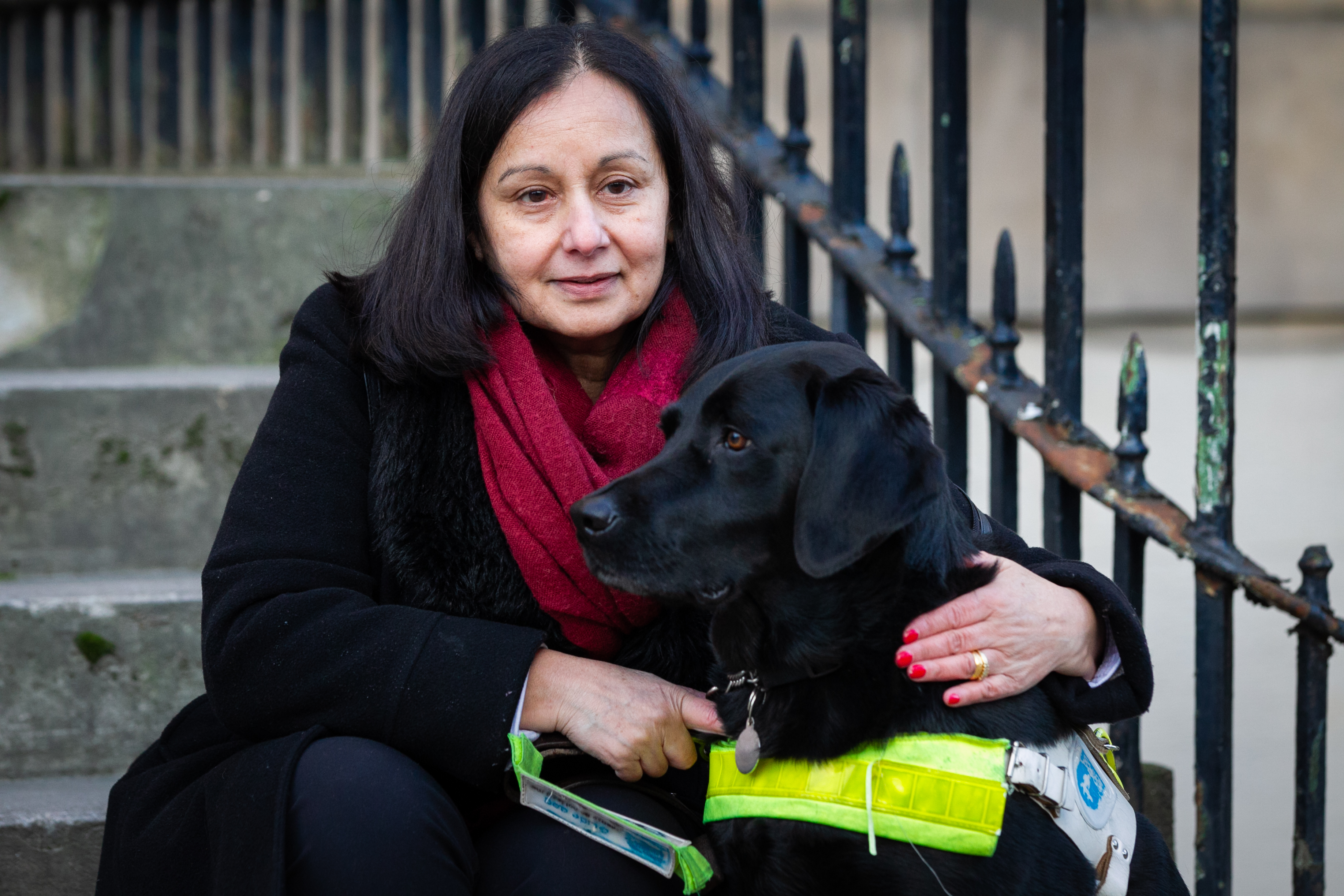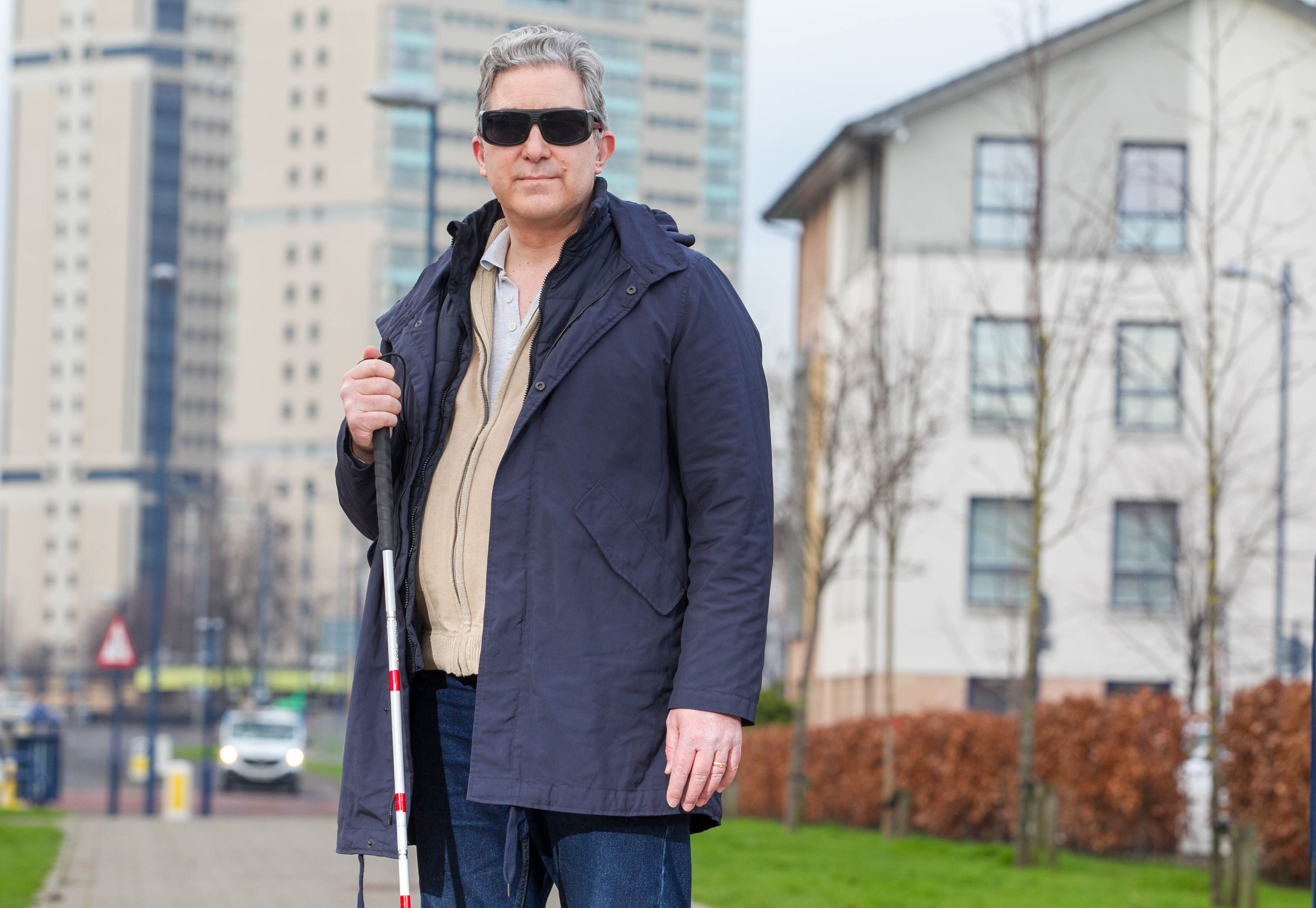
BLIND people are being denied crucial benefits because the official assessors do not understand sight loss, experts have warned.
A leading charity for the blind and visually impaired has warned assessors lack the specialist knowledge to make informed judgements about whether people should receive Personal Independence Payment (PIP).
PIP is a non-means-tested benefit for disabled people who need help with everyday tasks and getting around.
It was introduced five years ago to replace the Disability Living Allowance and James Adams, director of Royal National Institute of Blind People Scotland, said it is a crucial benefit for blind and partially sighted people.
But, he said: “For too many, we know the current assessment and decision-making process is not working. This is causing real hardship and distress.
“PIP assessors often don’t understand sight loss and the different ways it can impact on people’s daily lives.
“They routinely ask clients to undertake a crude vision test, despite the fact that in many cases clients have already provided a Certificate of Visual Impairment signed by an ophthalmologist, which confirms the level of their functional vision.
“Assessors appear to have no understanding of the impact of the loss or reduction of someone’s visual fields, or of light sensitivity – known as photophobia – on a person’s ability to navigate the built environment.”
Mr Adams said assessors will “routinely state” in paperwork that a blind person “made good eye contact” during an assessment.
But, he explained, most commonly that means the person’s head was simply following the assessor’s voice.
Assessors will also state that a client “travelled independently” to the assessment, even though they were taken door-to-door by a taxi.
Mr Adams said: “PIP assessments need to be undertaken by assessors with a much better understanding of sight loss, taking into consideration individual needs.
“They also have to be delivered in accessible ways for people with sight loss to fully take part.”
SNP MP Chris Stephens has echoed the concerns after obtaining figures revealing far more PIP decisions taken about blind and partially sighted people are being overturned on appeal.
In the last three years, around 40% of blind and visually impaired people in Scotland were refused a Personal Independence Payment (PIP) after the initial assessment.
But 16% of those decisions were overturned when blind and visually impaired people appealed. Across the UK, an average of 25% of blind and visually impaired people are refused PIP and 11% of decisions are overturned on appeal – compared to an average of 4% of decisions overturned for all disabled people.
Mr Stephens, who sits on the House of Commons Work and Pensions Committee, asked the government how many visually impaired people were denied PIP after initial assessment, only for the decision to be overturned on appeal.
Mr Stephens said: “It is clear from these figures that those in Scotland with sight loss are being failed by the government. For four in 10 claimants applying with a visual impairment to fail the initial assessment demonstrates that the system is not working and that those being tasked with delivering it do not fully understand the effects that sight loss has on a person’s day-to-day life.
“People are instead being forced to go through the stress of taking their case all the way to appeal. That process causes anxiety for many, forcing them to choose between their own mental health and PIP. This is completely unacceptable.”
RNIB Scotland director: Unnecessary and cruel tests must be halted… There has to be a better way – click here to read more
The DWP said: “The assessment criteria was designed with healthcare experts and disability organisations and we expect the highest standards from our providers’ qualified health professionals who carry them out.
“They combine their clinical knowledge with an understanding that not everyone with the same disability is impacted in the same way. Under PIP 66% of claimants with visual problems are receiving the highest possible support, compared with 4% under DLA; and over two thirds of those previously on DLA are getting more under PIP than they did before.”
Independent Assessment Services, formerly Atos, who carry out the PIP assessments for the DWP, said: “We value feedback and engage regularly with organisations that represent those with visual impairment to help make the assessment process as relevant and stress-free as possible.
“Our health professionals do not routinely perform visual tests on individuals with sight loss where evidence such as a certificate of visual impairment is present.”
Mark Fiddy was refused PIP and underwent an “aggressive interrogation” during an appeal, which he won.
The 49-year-old who lives in Glasgow’s south side with wife Rita has Stickler’s Syndrome, which has left him partially sighted. He also has hearing loss and osteoarthritis.
When he went for the initial assessment he was still employed in the banking sector and believes he was penalised because he didn’t have a “long white stick”.
He had applied for the mobility tool but hadn’t received it when he was assessed in Glasgow.
Mr Fiddy was asked to read letters on a wall chart even though he could not see it, then perform squats, which he refused to do.
“Just because I didn’t look disabled, it was assessed that I was not disabled,” he said. “They mentioned on the rejection form I had a job and I had managed to get from my office to the assessment centre on my own.
“They also said that I was observed walking something like 70 metres from the waiting room to the assessment room. I felt I was fighting a losing battle from the moment I went in.”
Mr Fiddy said the appeal was so “traumatic” he wished he hadn’t gone through it.
“I have never experienced such an aggressive interrogation in my life, and I worked in banking for 30 years,” he said.
“I was asked if I can cut my own toenails. I said I can’t see them and they asked why not, even though I am registered partially sighted.
“I came out of that appeal, mentally exhausted, upset and very angry. I was awarded £20 a week.
“The whole system is set up to prevent people getting PIP.”
Jamila’s story
Mother-of-two Jamila Shaikh, 59, said she broke down in tears during a “distressing” assessment process.
The test left her so stressed she walked into a wall and was almost knocked out.
Mrs Shaikh, who works as a community development officer, has cone dystrophy, an inherited ocular disorder which leads to blindness.
“I was registered blind 15 years ago,” said Mrs Shaikh, who lives in Glasgow’s west end. “It was apparently a faulty gene.”
Mr Shaikh’s husband, Usman, and their two daughters offered to accompany her to the appointment to be assessed for PIP, but she insisted on going alone.
She said: “I went into the building in Glasgow with a white cane but people were not very understanding. They gave me directions to the assessors but I was like, ‘ok, but how do I get there’.
“At that time, I could just about work out shadows and shapes. I managed to follow the assessor into a room.
“They did not put their hand out to assist me. They just watched me because they think you’re trying it on. Straight away I explained that I’m registered blind but they wanted to do all these ridiculous tests. They kept asking me if I could see letters on a chart on the wall. I said I couldn’t even see the chart.
“Then they asked how many fingers they were holding up. I could only see a shadow. How am I supposed to work out how many fingers they are holding up?
“Then they had me walk about. They told me to walk across to a wall. They asked me if I could dress myself.
“I started crying because it was so degrading. I am a vulnerable person and there was no friendliness. It was just a tick box exercise. They were very cold.
“I was so upset I became stressed out and disorientated and I bumped into the wall. I was stunned and I had a bump on my head which came out straight away.
“One of the people in reception came to help but the assessor just got on with their paperwork.
“When I got home I told my husband and he was totally shocked. He felt bad that he didn’t come with me but I wanted to be independent and insisted on going on my own.”
Mrs Shaikh was awarded PIP but she criticised the system which left her in tears.
“I didn’t expect them to be so cold,” she said.
Mother-of-two Jamila Shaikh, 59, said she broke down in tears during a “distressing” assessment process.
The test left her so stressed she walked into a wall and was almost knocked out.
Mrs Shaikh, who works as a community development officer, has cone dystrophy, an inherited ocular disorder which leads to blindness.
“I was registered blind 15 years ago,” said Mrs Shaikh, who lives in Glasgow’s west end. “It was apparently a faulty gene.”
Mr Shaikh’s husband, Usman, and their two daughters offered to accompany her to the appointment to be assessed for PIP, but she insisted on going alone.
She said: “I went into the building in Glasgow with a white cane but people were not very understanding. They gave me directions to the assessors but I was like, ‘ok, but how do I get there’.
“At that time, I could just about work out shadows and shapes. I managed to follow the assessor into a room.
“They did not put their hand out to assist me. They just watched me because they think you’re trying it on. Straight away I explained that I’m registered blind but they wanted to do all these ridiculous tests. They kept asking me if I could see letters on a chart on the wall. I said I couldn’t even see the chart.
“Then they asked how many fingers they were holding up. I could only see a shadow. How am I supposed to work out how many fingers they are holding up?
“Then they had me walk about. They told me to walk across to a wall. They asked me if I could dress myself.
“I started crying because it was so degrading. I am a vulnerable person and there was no friendliness. It was just a tick box exercise. They were very cold.
“I was so upset I became stressed out and disorientated and I bumped into the wall. I was stunned and I had a bump on my head which came out straight away.
“One of the people in reception came to help but the assessor just got on with their paperwork.
“When I got home I told my husband and he was totally shocked. He felt bad that he didn’t come with me but I wanted to be independent and insisted
on going on my own.”
Mrs Shaikh was awarded PIP but she criticised the system which left her in tears.
“I didn’t expect them to be so cold,” she said.
Mark’s story
Mark Fiddy was refused PIP and underwent an “aggressive interrogation” during an appeal, which he won.
The 49-year-old who lives in Glasgow’s south side with wife Rita has Stickler’s Syndrome, which has left him partially sighted. He also has hearing loss and osteoarthritis.
When he went for the initial assessment he was still employed in the banking sector and believes he was penalised because he didn’t have a “long white stick”.
He had applied for the mobility tool but hadn’t received it when he was assessed in Glasgow.
Mr Fiddy was asked to read letters on a wall chart even though he could not see it, then perform squats, which he refused to do.
“Just because I didn’t look disabled, it was assessed that I was not disabled,” he said. “They mentioned on the rejection form I had a job and I had managed to get from my office to
the assessment centre on my own.
“They also said that I was observed walking something like 70 metres from the waiting room to the assessment room. I felt I was fighting a losing battle from the moment I went in.”
Mr Fiddy said the appeal was so “traumatic” he wished he hadn’t gone through it.
“I have never experienced such an aggressive interrogation in my life, and I worked in banking for 30 years,” he said.
“I was asked if I can cut my own toenails. I said I can’t see them and they asked why not, even though I am registered partially sighted.
“I came out of that appeal, mentally exhausted, upset and very angry. I was awarded £20 a week.
“The whole system is set up to prevent people getting PIP.”

Enjoy the convenience of having The Sunday Post delivered as a digital ePaper straight to your smartphone, tablet or computer.
Subscribe for only £5.49 a month and enjoy all the benefits of the printed paper as a digital replica.
Subscribe
